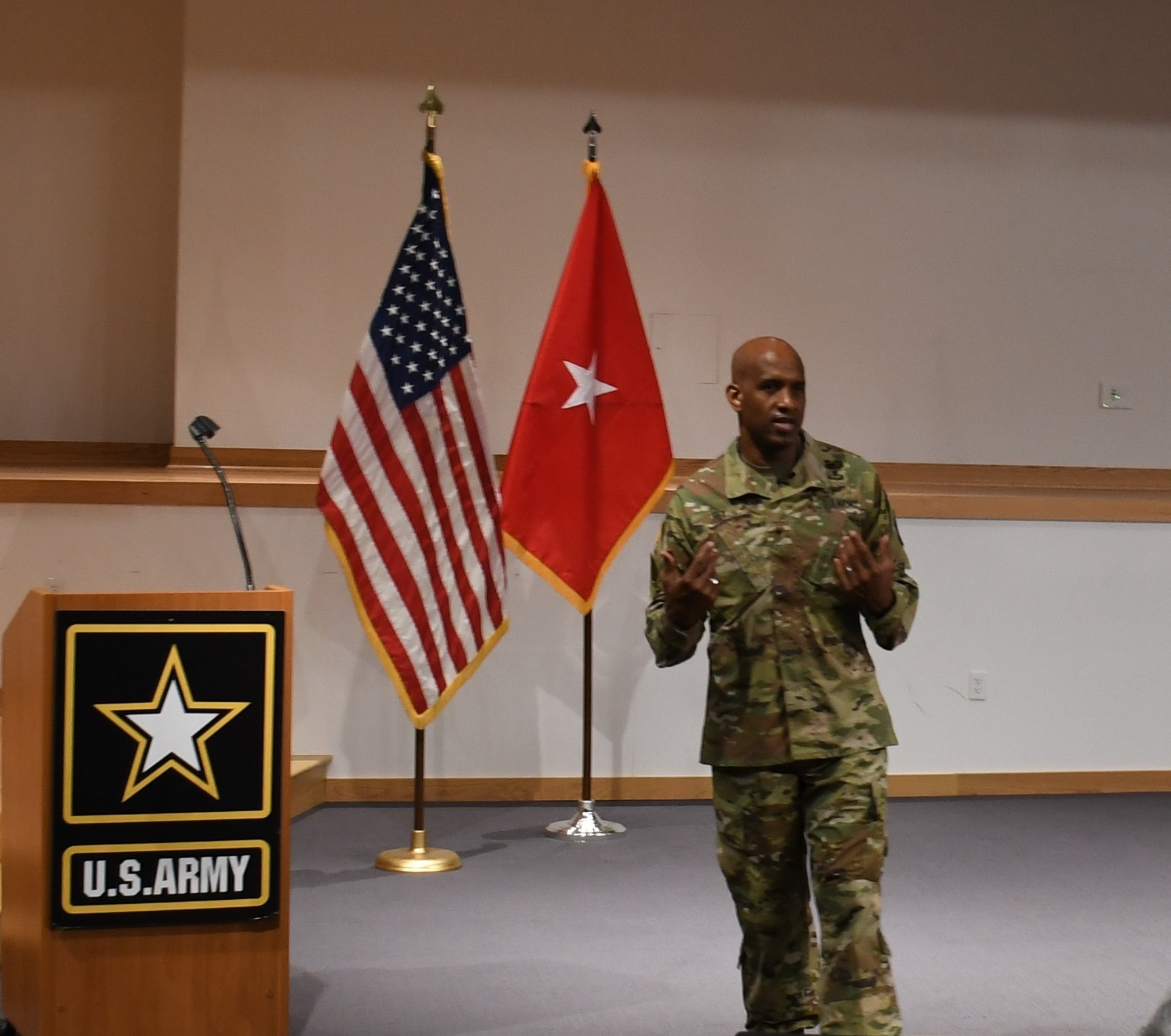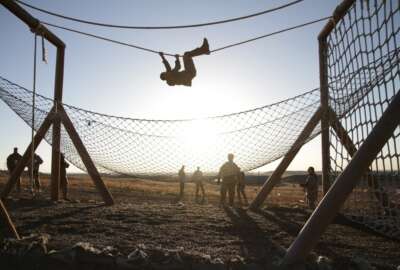Gen. Rey reflects on leading Network Cross Functional team
Maj. Gen. Jeth Rey focused on four pillars, including agnostics transport and moving the Army toward a data-centric environment, over the last three years.
Maj. Gen. Jeth Rey ended his three-year tenure as the director of the Army’s Network Cross Functional team last week. When he started in 2021, Rey laid out a four-pronged vision to move the Army toward a data-centric environment.
Rey, who moved to a new job at the Pentagon as the director of architecture, operations, networks and space at the Office of the Deputy Chief of Staff, G-6, said the Army has made tremendous progress to become a data-centric organization over the last three years.

“The problem said that we had in the Army, and across DoD, is we didn’t have a data problem, we had a data management problem,” Rey said in an interview at the Army TEMS conference. “Therefore, we tried to find a way to get to data centric using agnostic transport to move the data as freely as possible to where it needs to go, a cloud-enabled asset to catch and move the data, and then, obviously, you needed a layered security architecture. We wanted a multi-level security architecture where we can move the data from one classification to another seamlessly.”
Brig. Gen. Patrick Ellis, the former deputy chief of staff, G-3 for the Army Europe-Africa took over for Rey in early June.
Under the Network Cross Functional team, Rey’s four pillars were:
- Agnostic transport
- Moving to a data-centric environment from a network-centric environment
- Implementing a multi-level security architecture to include a zero trust architecture
- Ensuring cybersecurity is considered early as part of system development
Rey said he worked closely with Army Program Executive Office Command, Control and Communications Tactical (PEO-C3T) and the Command, Control, Communications, Computers, Cyber, Intelligence, Surveillance and Reconnaissance (C5ISR) Center in the Army Combat Capabilities Development Command to take the vision and make it into a reality.
“My role is setting the vision and then keeping the momentum going forward. I would set a timeframe that I would want to see a part of the project achieved, and then I just continue to drive the momentum going forward,” Rey said. “We are the influencers as the Network Cross Functional team to get to the end state and keep people focusing on track.”
Army’s transport is now multi-threaded
The Army demonstrated its progress in advancing these capabilities over the past few years at Project Convergence and NetModX, which is one of their major exercises that is run by the C5ISR.
Rey said one way the Army is better off than it was three years ago is how it processes data across multiple infrastructure approaches.
At one time, the soldiers could only use one type of approach, or single threaded, such as only using Geostationary Operational Environmental Satellites (GOES).
He said the C5ISR office created an automate planning for primary, alternate, contingency and emergency (PACE) communications plan to create the multiple threaded approach to transport.
“I wanted to see if there was a way to automate pace that we could go from 5G to low Earth orbit (LEO) satellite to GOES to medium Earth orbit (MEO) satellites. I think, three years later, we are almost there as an accomplishment when it comes to that part of our pillar,” Rey said.
A second pillar where Rey believes the Army has made significant progress in is moving to a data-centric environment. He said the advancements in the network architecture is a big part of this change.
“I believe that the way data is being approached today is a little different. I think what we need to think about is the way we create data because today data is stored on your laptop or it’s stored on your phone or it is stored in a data center or it stored in the cloud. It’s still really siloed, and from my perspective, we need more of a in a large data fabric where we can catch and make sense of data by using artificial intelligence and machine learning,” he said. “We need open application programming interfaces (APIs) in order for us to be able to share data. If we get to a point where I’d like down to the attribute base level of data sharing. Until we actually get there, we will continue to have data siloed the way we are today.”
The Army took a big step in this direction in January, starting to implement its unified data reference architecture (UDRA). The service recently completed version 1.0 of the UDRA while also building out an implementation plan of the framework in partnership with the Army Combat Capabilities Development Command (DEVCOM).
Keep the momentum going
The Army expects UDRA to bring together principles and efforts for data mesh and data fabric. While data mesh involves a decentralized approach where data product ownership is distributed across teams and domains, the data platform will facilitate seamless access and integration of data products from different formats and locations.
Rey said the concepts that make the data mesh and data fabric work go back to creating a unified network, especially in the tactical environment.
“There are two separate areas that we’re trying to unify together. In the tactical space is where we believe the data fabric is more important for us today because of all the sensors that are on the battlefield and in order to make sense of the information that’s out there,” he said. “That is the catcher’s mitt that needs to ingest the data, use analytics and then egress of data for the commander to make an informed decision across the board. I think we’re we have a lot of momentum right now. We’ve talked about the next generation of command and control systems that’s coming, and that’s going to be an ecosystem that allows us to really have a more robust type of data environment that will move data and echelon.”
Army Chief of Staff Gen. Randy George on May 28 signed off on the Next Generation Command and Control (NGC2) Capability Characteristics (C2 Next).
Rey said creating data in a way that also foresees wanting to share it remains one of the biggest challenges for the Army.
“The only way you can share it is if we decide what those attributes are going to look like, whether I’m with a partner or whether I’m just dealing with a US entity,” he said. “So, attributes are going to be key with how we tag label the data, and then be an in are able to share it at the end of the onset.”
As for the new director of the Network Cross Functional team Rey said his advice to Ellis was simple: “Don’t allow the momentum to slow down.”
Copyright © 2024 Federal News Network. All rights reserved. This website is not intended for users located within the European Economic Area.
Jason Miller is executive editor of Federal News Network and directs news coverage on the people, policy and programs of the federal government.
Follow @jmillerWFED






